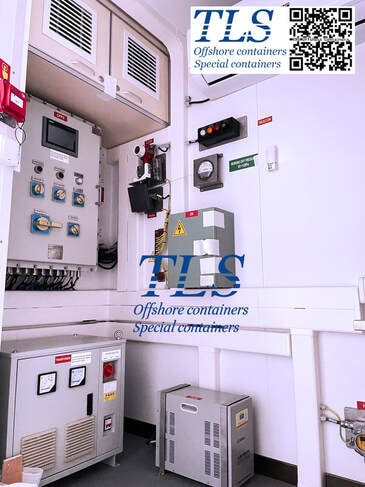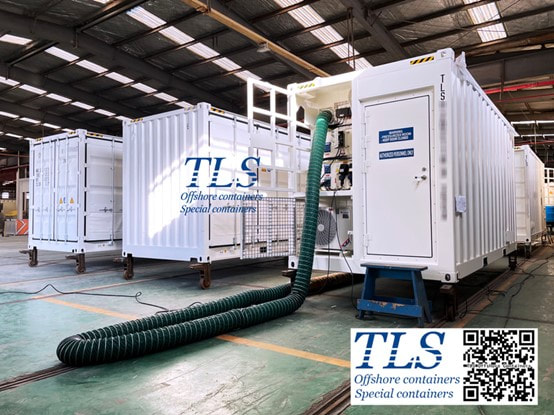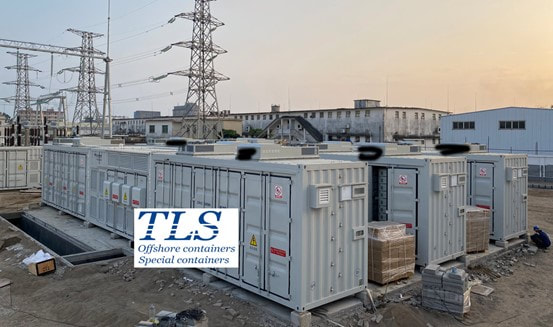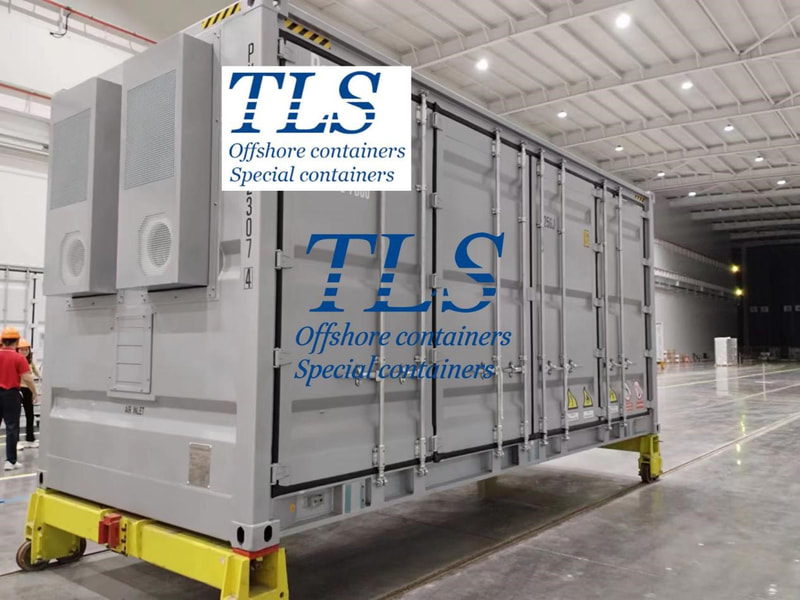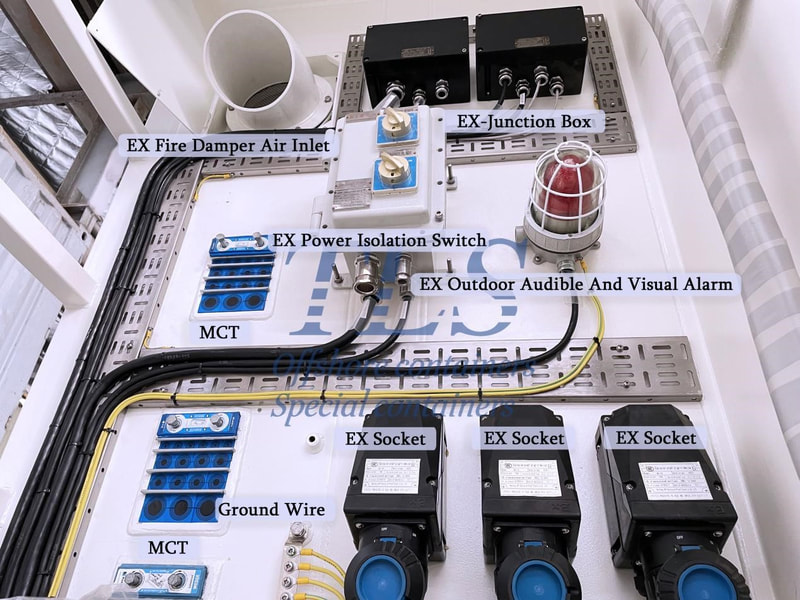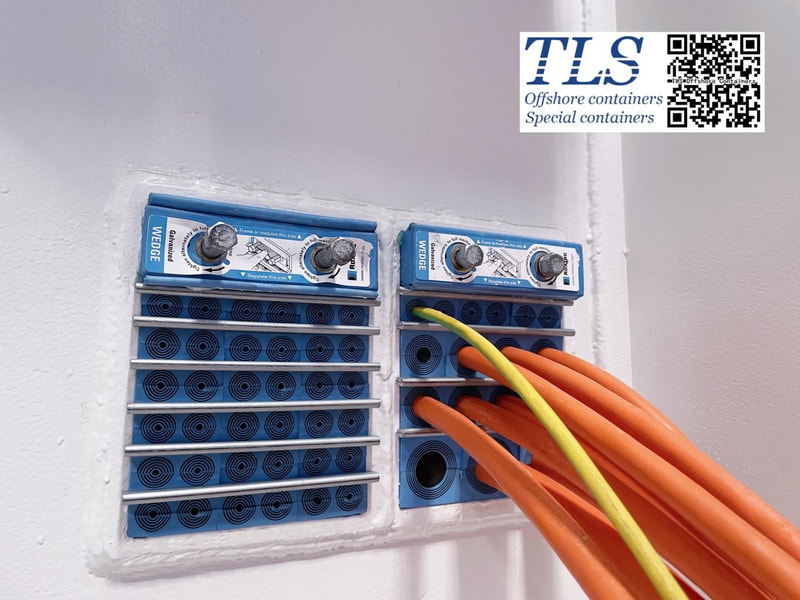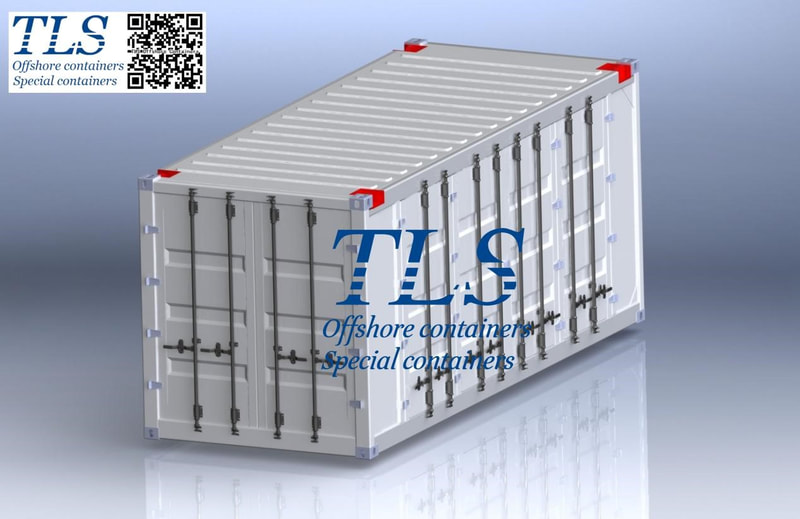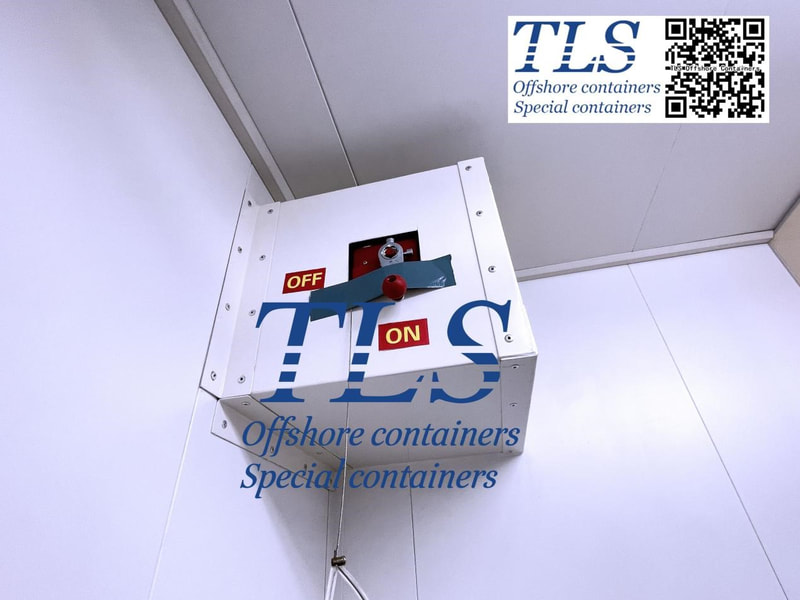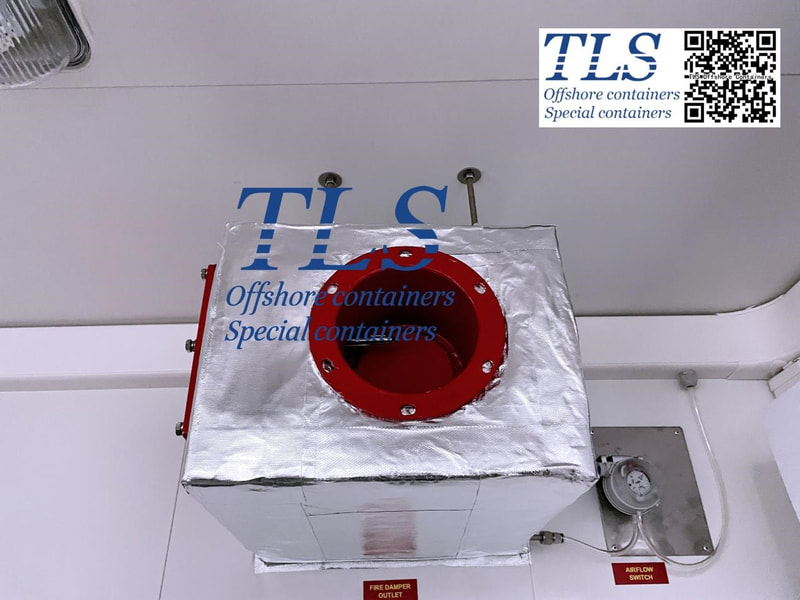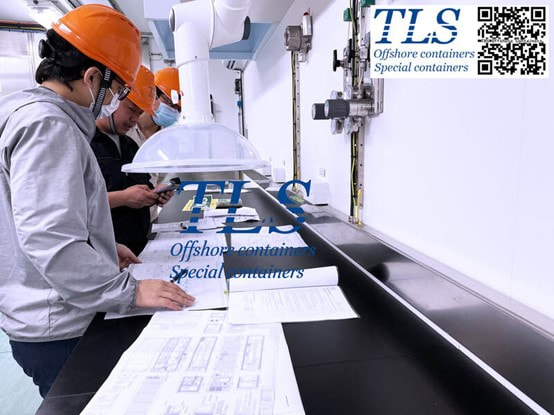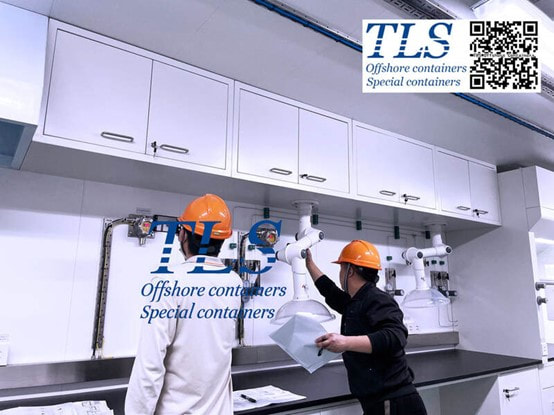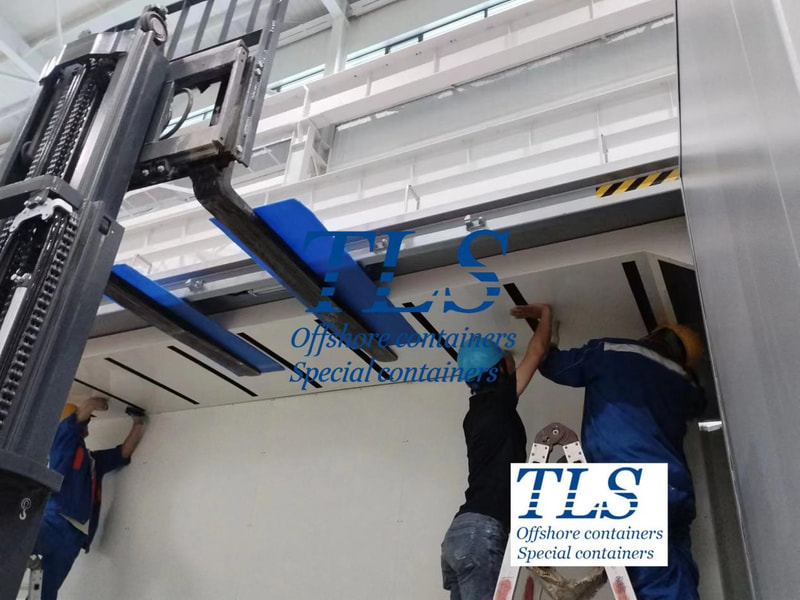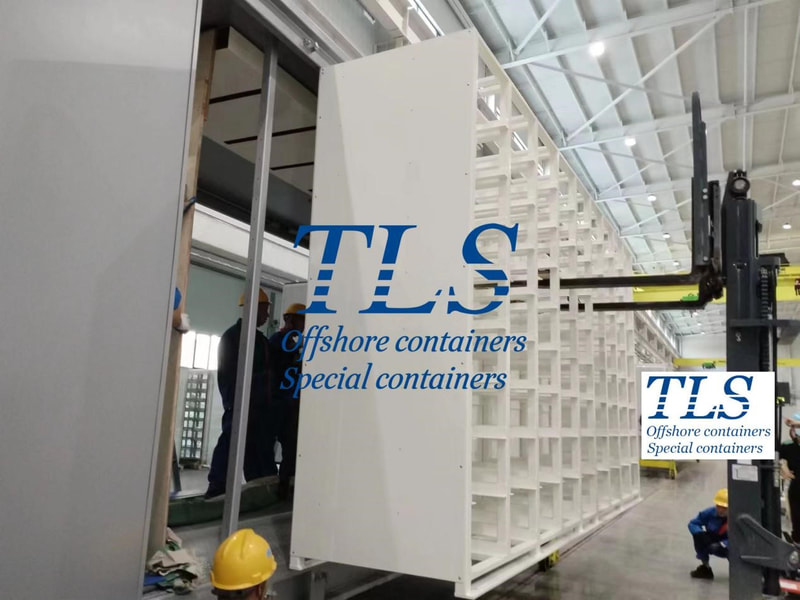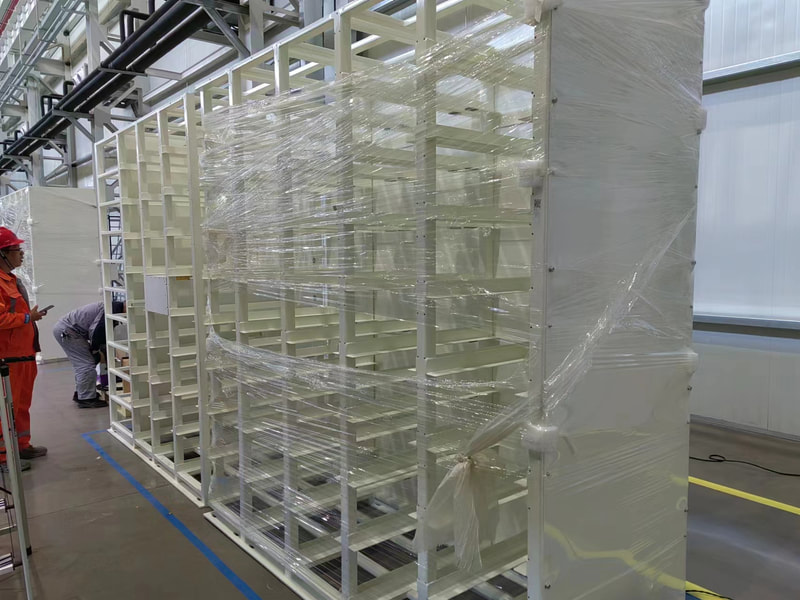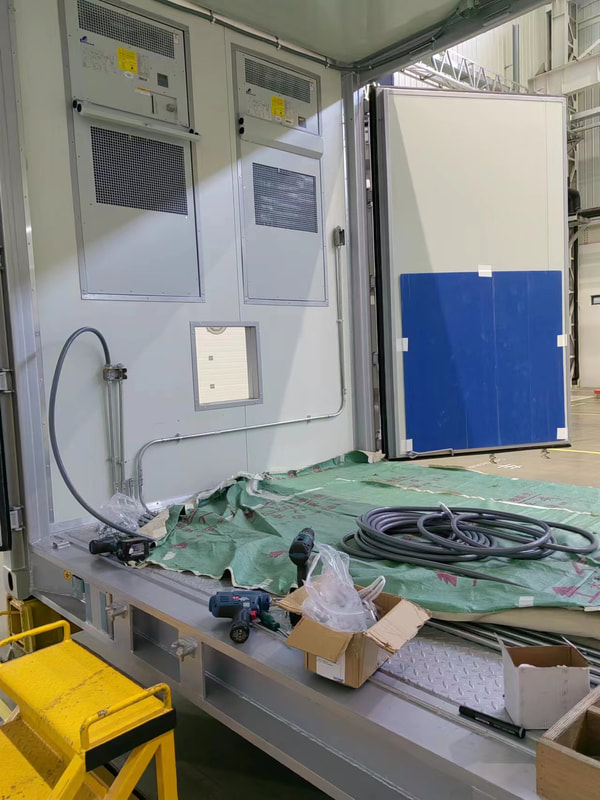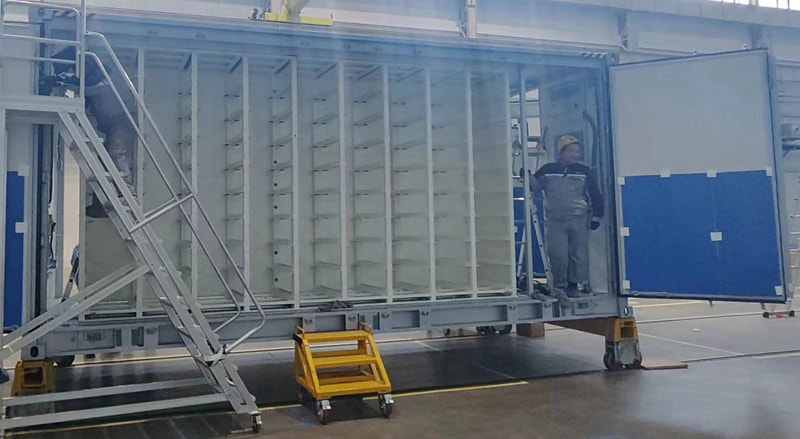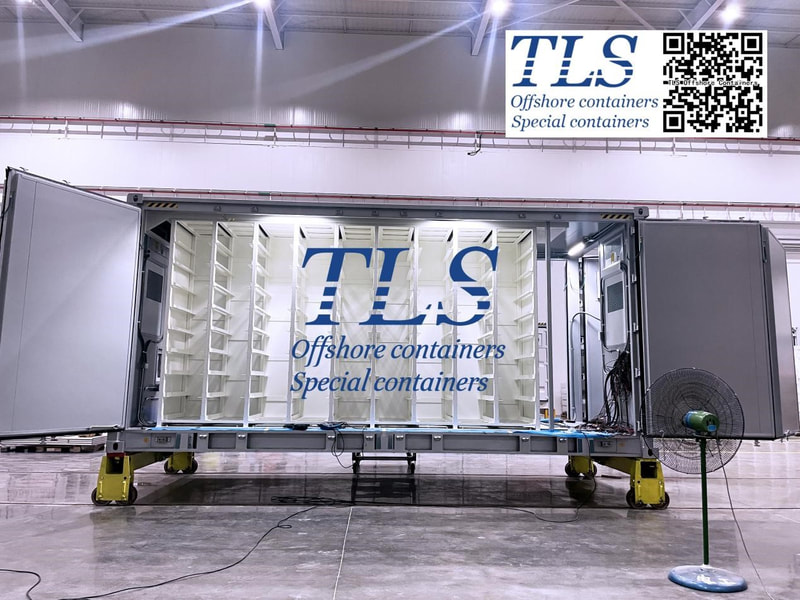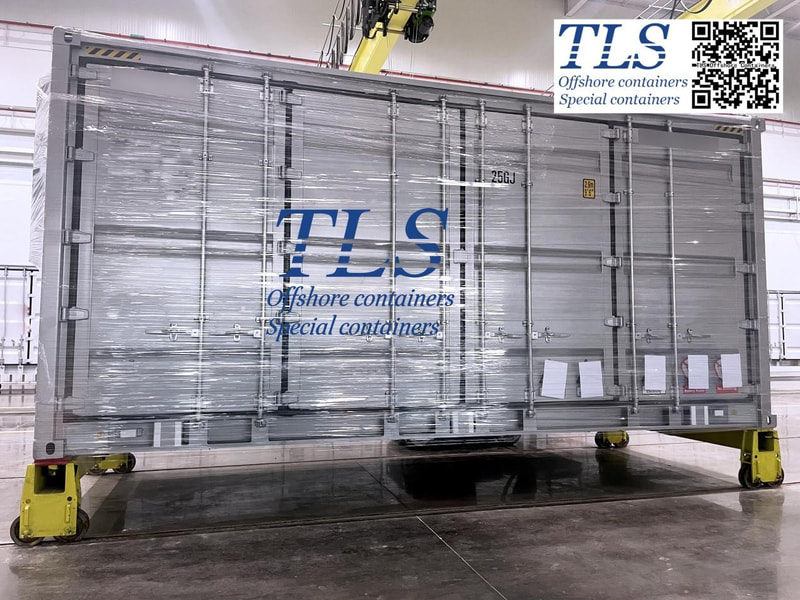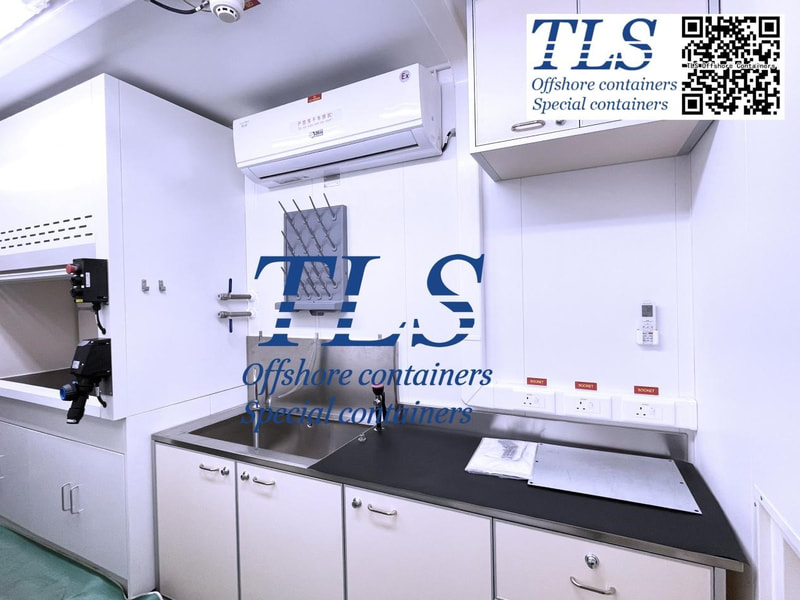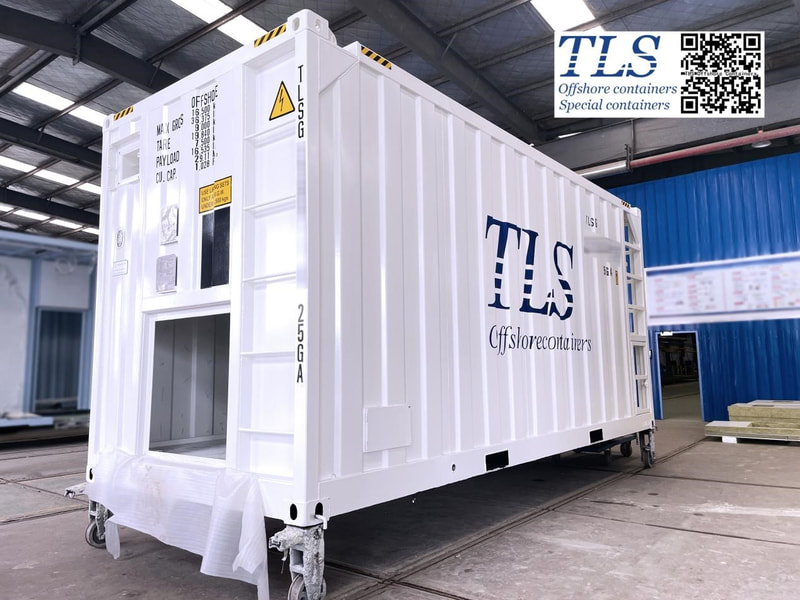Maximizing Offshore Safety: The Ultimate Guide to Combined Pressurization Fire and Gas Panels11/29/2023
In the fast-paced world of offshore safety, the Combined Pressurization Fire and Gas (CPFG) panel emerges as a game-changer. Intelligent pressurized containers from TLS Offshore Containers are the ultimate solution for safe and efficient offshore energy storage. These containers are designed and constructed to meet the specific needs and requirements of the customer, with CPFG control systems to create a safe environment for personnel and equipment. This article delves into the intricacies of CPFG systems, shedding light on their crucial role in mitigating risks and enhancing safety measures in hazardous environments. What is a CPFG Panel? A Combined Pressurization Fire and Gas (CPFG) panel is an advanced safety solution engineered to tackle fire and gas risks seamlessly. By integrating fire detection and gas detection functions, this system offers a streamlined approach to offshore safety, ensuring a swift response to potential threats. Applications of CPFG Panels in Offshore Modules
Safety Features that Set CPFG Apart
Benefits of CPFG Systems
Conclusion Embracing the advanced capabilities of Combined Pressurization Fire and Gas panels is not just a safety measure; it's a strategic move towards a secure, efficient, and compliant offshore operation. TLS Offshore Containers / TLS Special Containers is a global supplier of standard and customised containerised solutions. Wherever you are in the world TLS can help you, please contact us. Product brochures: Offshore pressurised mud logging cabin brochure MCC | Switchgear | VFD | VSD pressurised shelter #CPFG panels #Offshore safety #Hazardous areas #Offshore modules #Safety systems #Zone segmentation #Intelligent alarms #Safety shutdown systems #Real-time monitoring #Environmental protection #Regulatory compliance Written by OliverIntroduction: In an era dominated by the pursuit of sustainable energy solutions, energy storage containers have emerged as a key player in revolutionizing how we generate, store, and distribute power. These versatile containers are not only reshaping the energy landscape but are also finding diverse applications across various industries. In this article, we will explore the incredible potential of energy storage containers and their diverse applications that go beyond traditional energy storage. 1. Renewable Energy Integration: One of the primary applications of energy storage containers is in the integration of renewable energy sources, such as solar and wind power, into the grid. These containers store excess energy generated during peak production periods, ensuring a stable and reliable power supply during periods of low renewable energy generation. This enhances grid resilience and facilitates the transition to a more sustainable energy future. 2. Off-Grid Power Solutions: Energy storage containers play a crucial role in providing off-grid power solutions, especially in remote or disaster-stricken areas. Equipped with advanced battery technologies, these containers can store energy generated from renewable sources or traditional power grids, ensuring a continuous power supply in areas with unreliable or no access to the central power grid. 3. Mobile and Temporary Power Stations: The mobility of energy storage containers makes them ideal for temporary power stations. These containers can be easily transported to construction sites, events, or disaster response areas, providing a quick and efficient power source where needed. This application is not only environmentally friendly but also cost-effective, eliminating the need for the installation of permanent infrastructure. 4. Microgrids for Community Empowerment: Energy storage containers are the backbone of microgrid systems, offering communities the ability to generate, store, and distribute their own power locally. This level of energy independence is particularly valuable in regions with unreliable central grids or in developing countries where establishing large-scale power infrastructure may be challenging. 5. Electric Vehicle Charging Stations: As the demand for electric vehicles (EVs) continues to rise, energy storage containers are being employed to create mobile and scalable EV charging stations. These stations can be deployed at events, parking lots, or areas lacking fixed charging infrastructure, providing flexibility and accessibility for EV owners. 6. Grid Balancing and Peak Shaving: Energy storage containers contribute to grid stability by balancing supply and demand. During peak demand periods, these containers release stored energy to alleviate stress on the grid, preventing blackouts and reducing the need for additional power plants. This process, known as peak shaving, optimizes energy distribution and enhances overall grid efficiency. Conclusion: Energy storage containers are proving to be indispensable in the quest for a sustainable and reliable energy future. Their diverse applications extend far beyond traditional energy storage, encompassing renewable energy integration, off-grid solutions, mobile power stations, community microgrids, electric vehicle charging, and grid balancing. As technology continues to advance, the potential for energy storage containers to reshape the global energy landscape and drive positive environmental change is boundless. By unlocking their power, we are not just storing energy; we are storing the key to a more sustainable and resilient world. TLS Offshore Containers / TLS Special Containers is a global supplier of standard and customised containerised solutions. Wherever you are in the world TLS can help you, please contact us. Regarding the Battery Energy Storage System (BESS) container, please download Energy Storage System (ESS) Containers brochure for reference. #Energy storage containers #Renewable energy integration #Off-grid power solutions #Mobile power stations #Microgrids #Electric vehicle charging #Grid balancing #Sustainable energy #Resilient power supply #Environmental innovation Written by OliverIntroduction: In the complex and demanding landscape of offshore industries, the efficiency and reliability of operations are paramount. The Multi-Cable Transit (MCT) module emerges as a critical component, addressing the challenges associated with cable management in offshore containers. This article explores the pivotal role of the MCT module in ensuring organized and secure cable transit systems for offshore applications. Understanding the Multi-Cable Transit (MCT) Module: The MCT module is an advanced cable management system designed specifically for offshore containers. This innovative solution facilitates the organized and secure passage of multiple cables through container walls, ensuring a streamlined approach to power distribution, communication, and control systems in offshore environments. Key Features and Benefits:
Conclusion: As offshore industries continue to push technological boundaries, the Multi-Cable Transit (MCT) module emerges as a key enabler for efficient and reliable cable management in containers. Its ability to organize cable routing, provide modularity and flexibility, offer environmental protection, ensure fire resistance, and enhance time and cost efficiency positions it as an indispensable solution for the evolving needs of offshore applications. By utilizing MCT modules in offshore containers, TLS not only solves the compelling challenge of cable management, but also prepares for future offshore operations by providing a scalable and adaptable solution. TLS Offshore Containers / TLS Special Containers is a global supplier of standard and customised containerised solutions. Wherever you are in the world TLS can help you, please contact us. #Multi-Cable Transit #Cable Management #Offshore Containers #Cable Routing #Modular Cable Systems #Offshore Operations #Containerized Cable Solutions #Cable Transit Points #Environmental Protection #Fire Resistance Written by OliverIn the dynamic landscape of renewable energy, Battery Energy Storage Systems (BESS) have emerged as a key player in ensuring efficient energy management and grid stability. Among the various innovations within the realm of BESS, the incorporation of containerized solutions has garnered significant attention. This article delves into the technical advantages of BESS containers and how they are shaping the future of energy storage. 1. Modularity and Scalability One of the primary technical advantages of BESS containers is their modularity. Containerized energy storage systems are designed with scalability in mind, allowing for the seamless addition or removal of storage capacity as demand fluctuates. This modular approach not only enhances flexibility but also facilitates easier integration into existing energy infrastructure, making it an ideal solution for utilities and grid operators. 2. Rapid Deployment BESS containers offer unparalleled speed in deployment compared to traditional energy storage solutions. The pre-packaged nature of these containers allows for quick transportation and installation on-site. This rapid deployment is particularly advantageous in emergency situations, where the need for additional energy storage capacity can arise suddenly. As a result, containerized BESS can play a crucial role in enhancing grid resiliency and reliability. 3. Optimized Space Utilization Traditional energy storage solutions often require significant land area for installation. In contrast, BESS containers are designed to optimize space utilization. The compact design of these containers allows for efficient use of available space, making them suitable for urban environments or locations with limited footprint options. This feature is especially beneficial in areas where land is scarce, and maximizing storage capacity within a confined space is essential. 4. Environmental Considerations Containerized BESS solutions often leverage advanced battery technologies, including lithium-ion and other environmentally friendly materials. As the world continues to prioritize sustainability, the eco-friendly nature of these systems aligns with global efforts to reduce carbon emissions and transition to cleaner energy sources. Additionally, the containment structure of the container provides an added layer of safety in managing potential environmental risks associated with energy storage. 5. Enhanced Monitoring and Control BESS containers are equipped with advanced monitoring and control systems, allowing for real-time tracking of energy storage performance. This level of control enables operators to optimize energy flow, manage peak demand efficiently, and respond swiftly to grid fluctuations. The integration of smart technologies further enhances the overall reliability and performance of containerized BESS, making them a valuable asset in the quest for a smarter and more resilient energy grid. 6. Cost-Efficiency The modular design, rapid deployment, and optimized space utilization of BESS containers contribute to cost-efficiency. These systems can be deployed incrementally, allowing organizations to invest in energy storage capacity based on immediate needs. The overall cost-effectiveness of containerized BESS positions them as a compelling choice for both large-scale grid applications and smaller, localized energy storage projects. Conclusion In the ever-evolving landscape of energy storage, BESS containers stand out as a technologically advanced and versatile solution. Their modularity, rapid deployment capabilities, optimized space utilization, environmental considerations, enhanced monitoring, and cost-efficiency collectively contribute to a compelling case for widespread adoption. As the world continues its transition towards a more sustainable energy future, the technical advantages of BESS containers play a pivotal role in reshaping the dynamics of energy storage and grid management. TLS Offshore Containers / TLS Special Containers is a global supplier of standard and customised containerised solutions. Wherever you are in the world TLS can help you, please contact us. Regarding the Battery Energy Storage System (BESS) container, please download Energy Storage System (ESS) Containers brochure for reference. #Energy storage solutions #Modular energy storage #Scalable energy storage #Rapid deployment energy storage #Grid stability #Grid resiliency #Space-efficient energy storage #Environmental-friendly battery technologies #Smart energy storage #Monitoring and control systems #Cost-efficient energy storage #Sustainable energy solutions Written by OliverIntroduction: Safety at sea is a paramount concern, and one of the critical challenges faced by vessels is the risk of onboard fires. In this comprehensive guide, we explore the importance of fire dampers in pressurized shipping containers, detailing why they are crucial and providing practical insights on their effective usage. Why Fire Dampers Matter for Pressurized Shipping Containers? Pressurized shipping containers are designed to maintain a controlled atmosphere, but this feature also heightens the risk of rapid fire spread. Fire dampers play a vital role in mitigating this risk, acting as a barrier against the accelerated spread of fire and smoke. Understanding their importance is key to safeguarding both the crew and cargo. How Fire Dampers Operate in Pressurized Shipping Containers? Fire dampers function by regulating airflow within the ventilation system of a pressurized container. In the event of a fire, these dampers automatically close, preventing the passage of smoke and flames through the ventilation system. This containment provides crucial time for the crew to respond effectively, minimizing the impact of the fire. Best Practices for Fire Damper Usage: To ensure the effectiveness of fire dampers, certain best practices should be followed:
Conclusion: In conclusion, fire dampers are indispensable safety components in pressurized shipping containers. By understanding their importance, functionality, and best practices for usage, this guide aims to contribute to enhanced safety measures at sea. Professional installation, regular testing, and crew training are essential for a safer and more efficient maritime operation. TLS Offshore Containers / TLS Special Containers is a global supplier of standard and customised containerised solutions. Wherever you are in the world TLS can help you, please contact us. Product brochures: Offshore pressurised mud logging cabin brochure MCC | Switchgear | VFD | VSD pressurised shelter #Fire Dampers #Pressurized Shipping Containers #Maritime Safety #Ship Fire Prevention #Vessel Fire Control #Ventilation System Safety #Cargo Protection at Sea #Emergency Response Protocols #Maritime Regulations #Safety Equipment for Ships Written by OliverIntroduction: In the dynamic landscape of offshore operations, safety is non-negotiable. TLS Offshore Containers, a leading company in the industry, plays a pivotal role in providing cutting-edge solutions for the secure housing of sensitive equipment, especially negative pressure lab containers. This article delves into the significance of inspection for the Lab Containers, shedding light on the crucial role they play in maintaining a safe offshore environment. Understanding TLS Offshore Containers: TLS Offshore Containers, as a prominent industry player, specializes in manufacturing high-quality containers tailored for offshore applications. These containers are meticulously designed to withstand the rigors of offshore environments, offering robust protection for various equipment and ensuring operational integrity even in challenging conditions. Negative Pressure Lab Containers: A Specialized Solution Within TLS's extensive product lineup, negative pressure lab containers stand out for their specialized design catering to the stringent requirements of offshore laboratories. These containers serve as secure enclosures for handling hazardous materials, employing negative pressure technology to prevent the escape of potentially harmful substances into the external environment. The Significance of Inspection: Inspecting Negative Pressure Lab Containers is of paramount importance in ensuring the safety and integrity of offshore operations, particularly in the handling of hazardous materials within laboratory settings. The significance of regular inspections can be outlined through various key points:
Conclusion: TLS Offshore Containers, as an industry-leading company, plays a pivotal role in elevating offshore safety standards. Through their specialized negative pressure lab containers, TLS contributes to creating secure environments for handling hazardous materials offshore. Regular inspection of these containers is not just a regulatory requirement but a strategic investment in the well-being of personnel, the protection of sensitive equipment, and the preservation of the offshore environment. In a rapidly evolving industry, TLS remains at the forefront, providing innovative solutions that redefine the benchmarks for offshore safety and reliability. TLS Offshore Containers / TLS Special Containers is a global supplier of standard and customised containerised solutions. Wherever you are in the world TLS can help you, please contact us. Please download Laboratory container brochure for reference. #Offshore safety #Negative pressure lab containers #Hazardous material containment #Container inspection #Offshore operations #Environmental protection #Laboratory safety #Structural integrity #Emergency preparedness #Regulatory compliance Written by OliverOptimizing Energy Storage: Unveiling the Power of Battery Racks and Ducts by TLS Offshore Containers11/18/2023
In the dynamic landscape of energy storage, the significance of efficient, durable, and safe storage solutions cannot be overstated. TLS Offshore Containers has emerged as a frontrunner in this realm, offering cutting-edge battery racks and duct systems designed to revolutionize energy storage capabilities. Understanding the Need for Advanced Energy Storage Solutions As the demand for sustainable energy surges, the need for reliable and scalable energy storage solutions becomes increasingly critical. Battery racks and ducts play a pivotal role in this scenario, providing a secure environment for energy storage while ensuring optimal functionality and safety. TLS Offshore Containers: Pioneering Innovation in Energy Storage TLS Offshore Containers has been a trailblazer in the field of energy storage solutions, offering state-of-the-art battery racks and ducts that cater to a spectrum of industry needs. Their innovative designs are characterized by: 1. Durability and Safety: TLS's battery racks are engineered with robust materials, ensuring durability and longevity, even in harsh environmental conditions. Their focus on safety measures ensures the secure housing of batteries, mitigating risks and enhancing operational reliability. 2. Customization and Scalability The flexibility in design and the ability to customize solutions according to varying storage needs positions TLS Offshore Containers as a preferred choice for diverse applications. From small-scale setups to large industrial demands, their systems can be tailored for optimum efficiency. 3. Efficiency in Operation The design of battery racks and ducts by TLS aims to optimize the operational performance of stored energy. Their systems facilitate proper airflow, temperature regulation, and easy maintenance, contributing to enhanced energy storage efficiency. Conclusion: Revolutionizing Energy Storage with TLS Offshore Containers In the realm of energy storage, TLS Offshore Containers stands out as a beacon of innovation, offering bespoke battery racks and duct systems that cater to diverse energy storage requirements. With a focus on durability, safety, and operational efficiency, their solutions have the potential to transform the energy storage landscape, driving sustainable practices and facilitating the transition to a greener future. As the quest for sustainable energy intensifies, TLS Offshore Containers' commitment to excellence in energy storage solutions remains unwavering, positioning them as a leader in the field and a strategic partner for businesses seeking reliable and advanced energy storage systems. TLS Offshore Containers / TLS Special Containers is a global supplier of standard and customised containerised solutions. Wherever you are in the world TLS can help you, please contact us. Regarding the Battery Energy Storage System (BESS) container, please download Energy Storage System (ESS) Containers brochure for reference. #Battery racks for energy storage #Duct systems for efficient energy storage #Offshore energy storage solutions #Energy storage containers by TLS #Customizable battery racks for diverse applications #Containerized Battery Storage #Industrial Energy Storage #Climate-Controlled Battery Housing #Robust Battery Rack Design #Scalable Energy Container Solutions Written by OliverIn the emerging market of energy storage, TLS Offshore Containers / TLS Energy, stands at the forefront of innovation and excellence in the production of Battery Energy Storage System (BESS) containers. These specialized containers are designed to house and protect critical battery storage units, which are integral to managing and distributing energy in various applications, from supporting renewable energy integration to enhancing grid stability and efficiency. TLS Offshore Containers offers a spectrum of BESS solutions:
Each BESS container from TLS is a testament to the company's commitment to quality, safety, and technological advancement. The integration of cooling systems is essential to mitigate the thermal risks associated with battery operation, while the fire fighting systems are a crucial safety measure, guarding against potential hazards and ensuring the resilience of the energy storage solution. For businesses and energy providers looking to harness the power of advanced energy storage, TLS Offshore Containers offers not just a product, but a partnership. With a focus on innovation and customer satisfaction, TLS is ready to contribute to the global shift towards sustainable and reliable energy solutions. Whether it's a standard container or a fully integrated system, TLS is equipped to meet the demands of an ever-evolving energy sector. By investing in a BESS solution from TLS, customers are assured of a product that's not only built to last but also designed with the future in mind. Join the ranks of those leading the charge in energy storage and distribution with TLS Offshore Containers – where safety, innovation, and performance converge to power the world. Introduction: In an era where sustainable energy solutions are gaining prominence, the role of energy storage is becoming increasingly vital. Among the innovations taking center stage, 20ft energy storage containers are emerging as game-changers. Let's explore the critical role these containers are set to play in shaping the future of energy storage. Compact Powerhouses: 20ft energy storage containers pack a powerful punch in a compact form. These containers house cutting-edge energy storage technologies, allowing for efficient utilization of space without compromising on performance. Their portability and scalability make them versatile solutions for various applications. Renewable Energy Integration: The transition to renewable energy sources comes with the challenge of intermittency. Energy storage containers provide a solution by storing excess energy generated during peak times, ensuring a continuous and reliable power supply during periods of low renewable energy production. This integration is pivotal for a sustainable and resilient energy infrastructure. Grid Stability and Resilience: As our reliance on renewable energy grows, so does the need for grid stability. 20ft energy storage containers play a crucial role in stabilizing electrical grids by providing a buffer against fluctuations in energy production and consumption. This resilience is key to preventing power outages and maintaining a consistent energy supply. Remote and Off-Grid Applications: In remote or off-grid locations, where access to a centralized power grid is challenging, 20ft energy storage containers offer a decentralized energy solution. These containers can be deployed in areas without reliable access to traditional power sources, providing a sustainable and independent energy infrastructure. Emergency Power Backup: The compact nature of 20ft energy storage containers makes them ideal for emergency power backup systems. Whether in the event of natural disasters or grid failures, these containers can ensure a reliable power supply, supporting critical infrastructure such as hospitals, emergency services, and communication networks. Green Energy Transition Support: Governments and industries worldwide are committed to transitioning towards greener energy alternatives. 20ft energy storage containers play a pivotal role in supporting this transition by storing excess energy generated from renewable sources, reducing reliance on fossil fuels, and contributing to a more sustainable and eco-friendly energy landscape. Conclusion: As we navigate the challenges of a rapidly evolving energy landscape, 20ft energy storage containers stand at the forefront of innovation. Their critical role in integrating renewable energy, ensuring grid stability, and providing versatile energy solutions positions them as key players in shaping the future of sustainable energy. Embracing these compact powerhouses is not just a step forward; it's a leap towards a more resilient, reliable, and sustainable energy future. TLS Offshore Containers / TLS Special Containers is a global supplier of standard and customised containerised solutions. Wherever you are in the world TLS can help you, please contact us. Regarding the Battery Energy Storage System (BESS) container, please download Energy Storage System (ESS) Containers brochure for reference. #Sustainable energy solutions #Renewable energy integration #Grid stability and resilience #Compact energy storage #Decentralized energy solutions #Off-grid applications #Emergency power backup #Green energy transition #Future of energy storage #Portable energy solutions Written by OliverIntroduction: In the dynamic world of offshore operations, precision and safety are paramount. One crucial element that contributes significantly to both aspects is the utilization of negative pressure lab containers. These specialized containers play a pivotal role in ensuring a controlled and secure environment for various laboratory processes in offshore settings. Understanding Negative Pressure Lab Containers: Negative pressure lab containers are designed to maintain a lower pressure inside the container compared to the external environment. This unique feature serves multiple purposes, making them indispensable in offshore applications. Let's delve into the key aspects of how these containers contribute to efficiency offshore.
Conclusion: In the complex world of offshore operations, where precision, safety, and compliance are paramount, negative pressure lab containers emerge as unsung heroes. Their ability to create controlled environments, contain hazardous materials, and enhance overall safety makes them indispensable for offshore laboratories. As technology continues to advance, the role of these containers is likely to expand, further contributing to the efficiency and sustainability of offshore operations. TLS Offshore Containers / TLS Special Containers is a global supplier of standard and customised containerised solutions. Wherever you are in the world TLS can help you, please contact us. Please download Laboratory container brochure for reference. #Negative pressure lab containers #Offshore laboratory safety #Hazardous material containment #Controlled environment offshore #Lab container applications #Offshore laboratory processes #Worker safety in offshore labs #Regulatory compliance for lab containers #Cross-contamination prevention #Offshore environmental control Written by Oliver |
Archives
July 2024
Categories
All
|
- Home
-
Containerised solutions
- Intelligent pressurised container | MUD logging cabin
- Battery energy storage system (BESS) container
- Flexible grid tied battery storage system
- Laboratory container | workshop container | Equipment containers
- Temporary refuge shelter | Toxic gas refuge | Safe haven
- Offshore accommodation cabin | office container
- Reefer container | Refrigerated container
- Intelligent waste water treatment container
- Fresh water generator container
- Cargo Containers
- Product photos & videos
- News & Blogs
- Contact us
|
Featured products
Intelligent pressurised container Temporary refuge (TR) shelter, toxic gas refuge (TGR) Battery energy storage system (BESS) container Containerised waste water treatment plant Fresh water generator container Reefer container Laboratory container, Workshop container Accommodation container Offshore closed container |
All Rights Reserved 2020 © TLS Offshore Containers / TLS Energy
|

